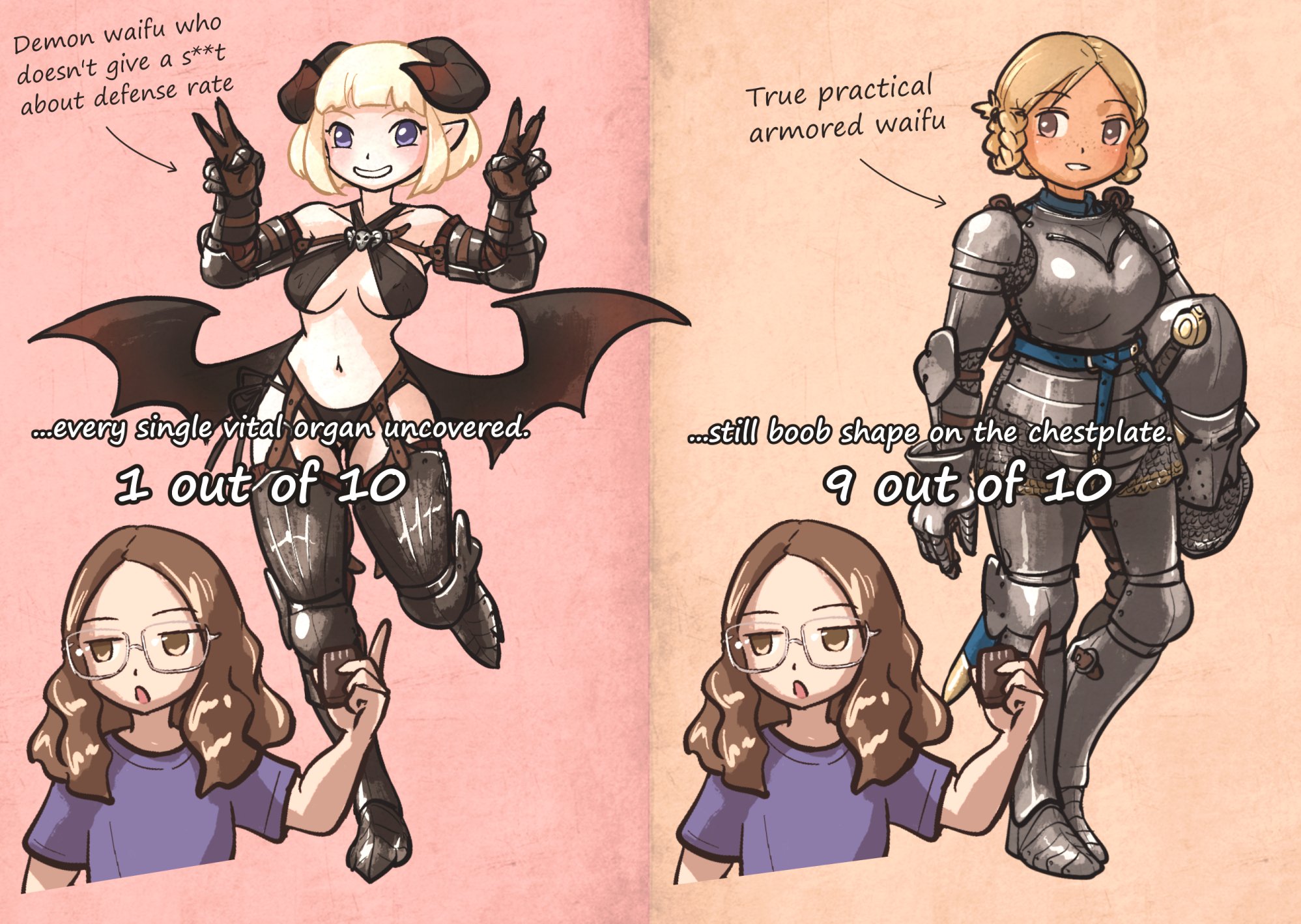this post was submitted on 02 Sep 2024
315 points (92.9% liked)
RPGMemes
10497 readers
57 users here now
Humor, jokes, memes about TTRPGs
founded 2 years ago
MODERATORS
you are viewing a single comment's thread
view the rest of the comments
view the rest of the comments

Mail was much too expensive to produce to outfit "Most foot soldiers" with. For much of the middle ages, most foot soldiers wore some kind of Gambeson and a helmet. A mail hauberk was the next step up, as it was still cheaper than a full mail shirt.
Plate cuirasses became common among the more wealthy in the late middle ages. By the early modern period, when the Almain Rivet (half-armour) became cheap enough, you'd see smaller professional armies be outfitted with them. But the common peasantry generally couldn't afford either for the longest time.
As a rule, if something didn't work in war, people wisened up and stopped doing it. They weren't stupid, just because they didn't have the same wealth of knowledge thay we do.
Knights didn't want to impress and get killed, they wanted to win and live. No amount of status will help you if your opponents dance on your grave. If plate was as much of a liability as you claim, it wouldn't have become more popular, comprehensive and accordingly expensive over time, until Gunpowder started accelerating weapons development far beyond anything protection could keep up with.
You're right that full plate was often worn by heavy cavalry, both as a matter of wealth and as a matter of utility. Heavy Cavalry were shock troops, morale breakers, designed to make your (often not professionally trained) soldiers falter, break order, open gaps in their ranks to get out of the way of the thundering beast charging at them. The appearance added to the indimidation, but it also helped protect on the way to and through the infantry lines.
There were mounted heavy infantry too that would ride to battle, then dismount and advance with the soldiery, and there too did plate help protect. It's easier to confidently walk into a line of levied peasants pointing spears at you if you're hard to actually wound.
In either case they were made of much thinner plate than some pop culture depictions would make them out to be - about 20-30kg. A modern soldier's kit isn't lighter than that.
Most battles that saw heavy cavalry lose were because of miscalculations, not because the armour made them immobile. If infantry in good order maintained cohesion, but the cavalry kept charging instead of turning to feint, they likely got stuck in a melee where numbers would be against them. If they rode into heavy missile fire, no amount of mobility will magically let them dodge the arrows, but a good plate would increase your chances of survival. If they got stuck in the mud as sitting ducks, that was because horses don't always deal well with running across uneven ground, particularly with sudden pitfalls where the ground is softer, and even more if heavy rain and blinders impeded their vision.
Yes, bodkin arrows from a sufficiently powerful warbow at sufficiently short ranges and steep angles of impact may well penetrate plate, particularly the less solid visors, and arrows in general bear a risk of felling your horse, but some armour is better than no armour.
Like I said, if it didn't help in battle, they wouldn't go to such lengths and expenses to produce it and wear it to battle. They'd wear it to ceremonies, to parades and to tourneys, but not to war.
I'll leave you with this demonstration of mobility